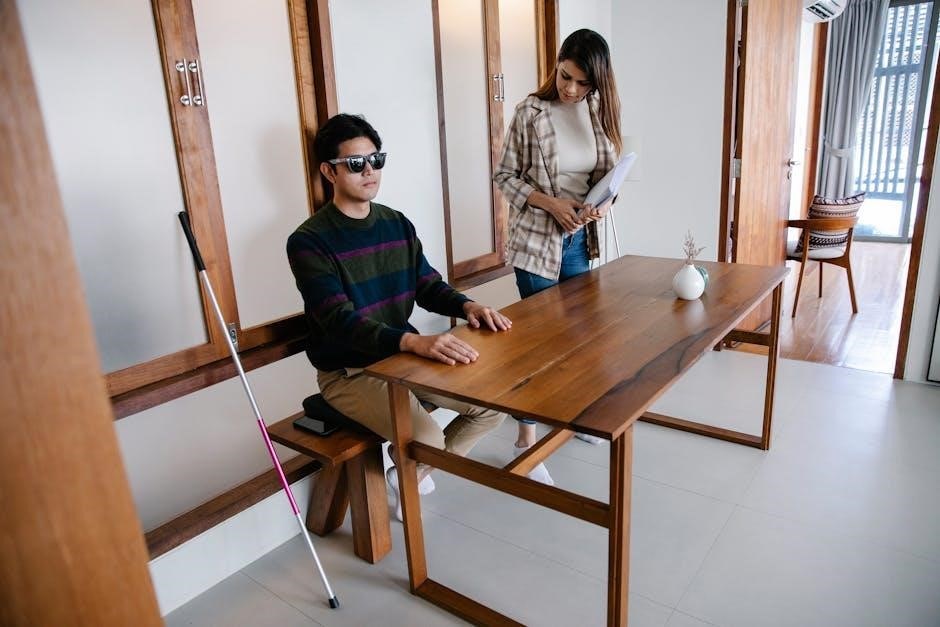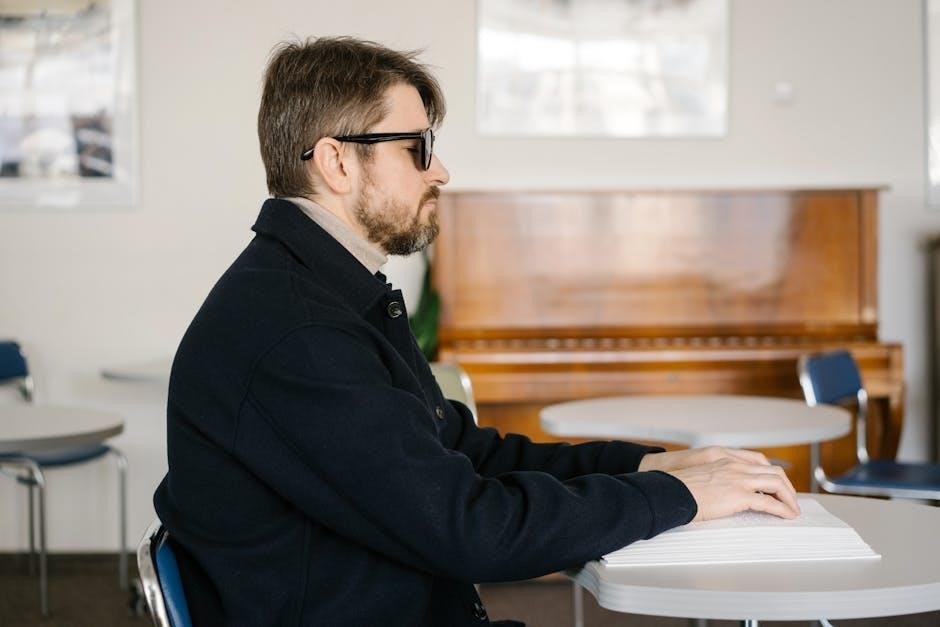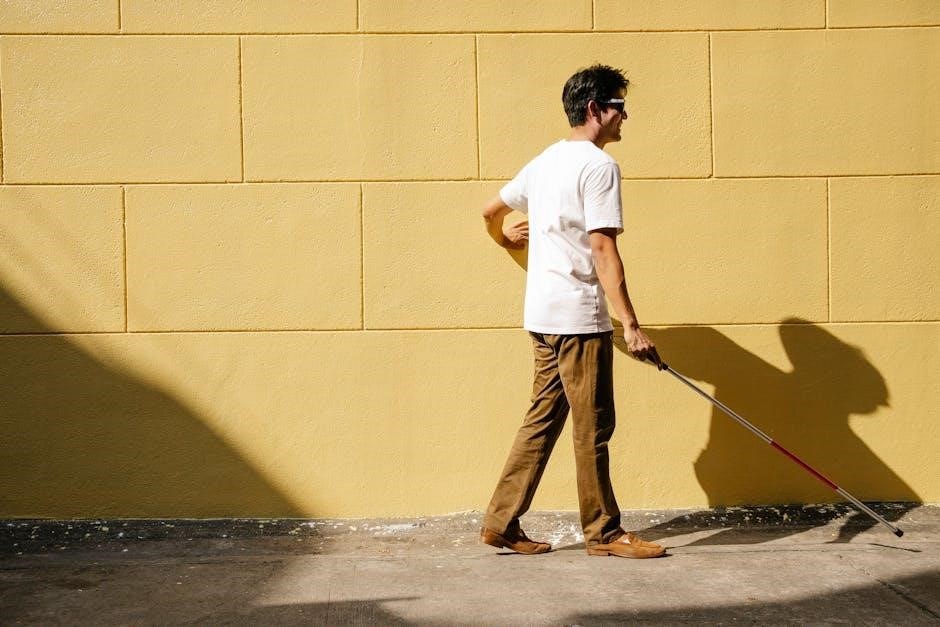Running guides support visually impaired runners, enabling them to participate in athletic events and activities, with guides providing verbal cues and physical assistance when necessary, using specialized techniques and equipment, every day;
Importance of Guides for Visually Impaired Runners
Guides play a crucial role in enabling visually impaired runners to participate in running activities, providing them with the confidence and support they need to navigate various terrains and environments․ The importance of guides lies in their ability to offer verbal cues, physical assistance, and emotional support, helping runners to overcome obstacles and achieve their goals․ By having a guide, visually impaired runners can focus on their performance, pace, and technique, without worrying about their safety or navigation․ Guides also help to build trust and rapport with the runners, creating a strong bond that is essential for successful partnerships․ Moreover, guides can provide valuable feedback and guidance, helping runners to improve their skills and techniques, and achieve their full potential․ Overall, the importance of guides for visually impaired runners cannot be overstated, as they provide the necessary support and assistance to enable runners to participate fully and safely in running activities․

Benefits of Guided Running for Visually Impaired
Guided running provides visually impaired individuals with independence, confidence, and physical exercise, improving overall well-being and quality of life every day always․
Types of Visual Impairment and Guide Running
There are various types of visual impairment, including partial sight and total blindness, each requiring unique guide running approaches․ Guides must understand the individual’s visual capabilities to provide effective support․ The type and severity of visual impairment influence the guiding technique, with some runners requiring more verbal cues and others relying on physical guidance․ Additionally, guides must be aware of the runner’s other senses, such as hearing and tactile awareness, to provide a safe and enjoyable running experience․ By understanding the different types of visual impairment, guides can tailor their support to meet the individual’s needs, enabling them to participate in running activities with confidence and independence․ This personalized approach is essential for successful guide running, allowing visually impaired individuals to engage in physical activity and reap its numerous benefits․ Guides play a vital role in empowering visually impaired runners․

Workshops and Training for Guides and Runners
Guides and runners attend specialized workshops, receiving training and guidance on supporting visually impaired athletes, every day, using various techniques․
Top Tips and Safety for Guide Running
Guide running for visually impaired individuals requires careful consideration of safety and technique․ Guides should be aware of their surroundings, including potential obstacles and hazards, and communicate clearly with their runner․ The use of verbal cues, such as “step up” or “step down”, can help the runner navigate uneven terrain․ Guides should also be mindful of their own physical abilities and limitations, ensuring they can provide adequate support and assistance to their runner․ Additionally, guides should be trained in basic first aid and emergency procedures, in case of an accident or injury․ By following these top tips and safety guidelines, guides can help provide a safe and enjoyable running experience for visually impaired individuals․ Guides and runners can work together to build trust and confidence, allowing them to run safely and effectively, and achieve their goals, with guides providing verbal cues and physical assistance when necessary․

Personal Experiences of Guide Runners
Guide runners share their stories and experiences, inspiring others to get involved and support visually impaired runners, every day, with passion and dedication, helping them achieve their goals․
Paralympic Rules and Guide Runners
Paralympic rules allow runners with a severe visual impairment to be helped by guides in their competition, with the goal of providing a safe and fair experience for all athletes․ The rules specify the role of guides, including their responsibilities and requirements, such as matching the athlete’s pace and providing verbal cues․ Guides are trained to work with visually impaired athletes, using specialized techniques and equipment to ensure a successful partnership․ The International Paralympic Committee sets the rules and regulations for guide runners, which are updated regularly to reflect the evolving needs of visually impaired athletes․ By following these rules, guide runners can help their athletes achieve their full potential and compete at the highest level․ The rules also emphasize the importance of trust and communication between the guide and athlete, which is essential for a successful partnership․ Overall, the Paralympic rules provide a framework for guide runners to support visually impaired athletes in their pursuit of excellence․

Non-Profit Organizations Supporting Visually Impaired Runners
Organizations provide guides, training, and resources for visually impaired runners, promoting inclusion and accessibility in running, every day, with support․
How to Get Involved as a Guide Runner
To get involved as a guide runner, individuals can start by researching local organizations that support visually impaired runners, such as Running Blinds, and expressing their interest in volunteering as a guide․ Many organizations provide training and workshops for guides, which cover topics such as communication techniques, safety protocols, and running strategies․ These workshops are essential for guides to learn how to effectively support visually impaired runners and ensure a safe and enjoyable running experience․ Additionally, guides can gain experience by pairing up with experienced guide runners and visually impaired athletes, allowing them to learn from others and develop their skills․ By getting involved as a guide runner, individuals can make a significant difference in the lives of visually impaired athletes, enabling them to participate in running events and achieve their athletic goals․ With the right training and support, anyone can become a guide runner and help promote inclusion and accessibility in the running community․
